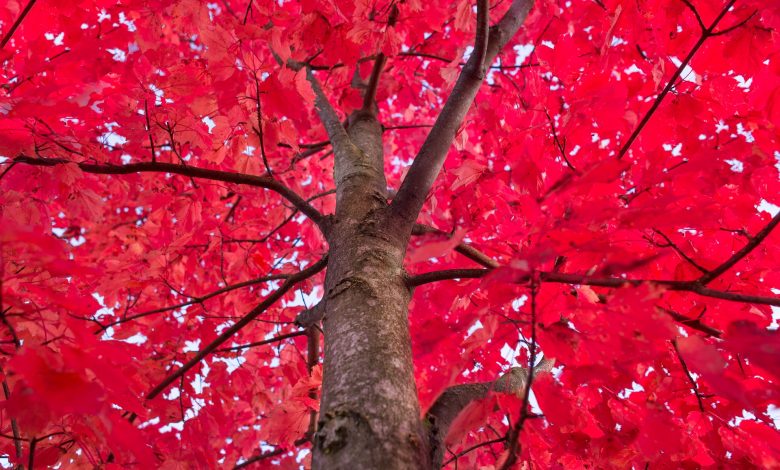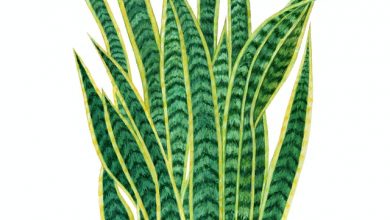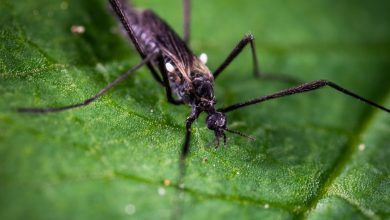How to Care for Red Maple Trees

The blazing color of the red maple tree is one of the highlights of the fall season. While there are many trees that are equally as stunning, most flowering trees bloom for just a week or two in the spring before going back to their normal state. The red maple, however, stays red in one form or another throughout all four seasons.
Red buds can be seen in the winter, red flowers appear in the spring, and the stalks of the leaves stay red throughout the summer. Of course, the red maple shines its brightest in the fall when rich red colors are emblazoned throughout the foliage. During the fall, swaths of red maple trees growing in the northeastern part of the United States up into Canada can be seen from space, slowly turning from green to red.
Botanical Information
The botanical name for the red maple is the Acer rubrum. Maple trees are distinguishable by their leaves which have five points.
- Flower – Small red flowers will bloom in clusters when spring begins in March and April.
- Fruit – Twin seeds are bound together with one-inch long wings growing from them. These are commonly known as “helicopter seeds.”
- Appearance – Red maples are medium-sized trees and quick growers. They will typically range from 40 to 60 feet in height. In the wild, some red maples can grow as tall as 120 feet high. Red maples generally reach out to 40 feet with an irregular shaped crown. When the tree is young, its bark will be gray and smooth. As it ages, the bark will grow darker and rougher.
- Leaves – The distinguishable leaves of a red maple grow opposite of one another on each twig. They grow from two to six inches in length with triangular lobes that are separated by V-shaped sinuses. In the summer, the leaves are medium to dark green on top and silver-gray on the bottom. In autumn, the leaves will change from yellow to a vibrant red.
- Hardiness Zone – The red maple can handle winter temperatures down to zone 3b on the hardiness scale. It can handle heat up to zone 9b, making this is a viable choice for planting throughout the vast majority of the United States. The areas where the red maple may have issues growing would be southern Georgia, Florida, Louisiana, and southeast Texas.
How to Care for Red Maple Trees
The red maple is a popular tree for landscapes because it is not difficult to grow. As long as you plant on the right soil and keep up with your watering schedule, you should have a healthy tree that will grow quickly. One aspect to take note of before planting is the root system of maple trees. The red maple is a shallow-rooted tree that can easily push up a sidewalk or other paved surface if it’s planted too close.
Sunlight
Red maples are not picky about the amount of sun they receive. Full sun will likely lead to faster growth, but they can also grow well in partial shade.
Water
Deep watering is necessary to keep your tree healthy. You want the soil around the tree to remain moist. If you add a layer of mulch around the tree it can help maintain the water in the soil. Give your tree at least one deep watering session per week.
Soil
The one thing to remember about the soil for red maples is that they do not grow well in alkaline. The pH scale ranges from zero to 14, with a pH under seven acidic, and a pH above seven alkaline. Red maple trees prefer a neutral to acidic soil.
Fertilizer
Using fertilizer is optional. If you’d like to fertilize, apply any standard fertilizer to the base of the tree during the spring.
Temperature
Red maples can grow in all but the most extreme temperatures. Whether the area is dry or humid, swampy or mountainous, the red maple is built to survive. In the United States, red maples can be grown confidently as far south as the Carolinas.
Pests
Red maples are pest and disease resistant, giving you one less thing to worry about when growing.

Varieties of Red Maples
If you’d like to add a unique variety of red maple to your yard, there are many varieties of hybrids that produce varying shapes and colors.
Autumn Blaze
A cross between a red maple and silver maple, if you are looking for the richest red colors in the fall, consider seeking out an Autumn Blaze. The color starts turning on the Autumn Blaze quicker than most maples, which gives you a few more weeks to enjoy.
As the end of summer turns into the first days of fall, watch as the leaves slowly change color and transform the look of the tree. The color change will start at the top and slowly work its way down the tree until it becomes a massive blaze of beautiful red.
The leaves can grow slightly larger than other maples, up to five inches in length. This variety is also a fast grower.
Burgundy Belle
Also known as the ‘Magnificent Magenta,’ the Burgundy Belle gets its name from its deeper shade of burgundy red leaves in the fall. First, the leaves will turn from green to a brilliant red. But then they will turn again to an intense burgundy.
October Glory
Another fast-growing variety of red maple, October Glory will not disappoint. This variety will grow to about the same size and shape as a typical red maple. The main difference the October Glory brings to the landscape is that the colors of its leaves will change from deep green to orange in the fall before turning to its signature red.
Red Sunset
The Red Sunset variety of maple is known for is quality branch structure and strong wood. This tree is popular with birds and squirrels and will grow as high as 50 feet tall and 40 feet wide. The colors of its leaves will turn quicker than most trees, beginning as a red-orange before turning to brilliant red.
Scarlet Sentinel
Another cross between a red maple and silver maple, the Scarlet Sentinel is a fast-growing tree that can handle many different climates. The scarlet sentinel has a wider range of colors throughout the seasons. Its leaves initially bloom as red before turning to green in the summer. In the fall, the leaves turn yellow-orange before changing to a rich shade of red. This tree is also distinguishable by its slightly thinner width, growing up to 25 feet wide.

Varieties of Maple Trees
The red maple is one of 13 different varieties of maple trees. Here is a quick rundown of the other 12 varieties of maple trees.
Amur Maple
Scientific name: Acer ginnala
The Amur maple is one of the smaller varieties you’ll come across, maxing out at 30 feet in height. Native to Siberia, Mongolia, Japan, and Korea, this tree will turn red and yellow in the fall.
Big Leaf Maple
Scientific name: Acer macrophyllum
With leaves that can reach 12 inches in length, the big leaf maple is also referred to as the broadleaf maple or Oregon maple.
Hedge Maple
Scientific name: Acer campestre
The hedge maple is the heartiest variety you can come across, growing well in any type of soil or climate. Also known as a field maple or common maple, this tree will grow from 25 to 35 feet high.

Hornbeam Maple
Scientific name: Acer carpinifolium
The leaves of a hornbeam maple look nothing like typical maple leaves. Its leaves are longer than other varieties with thinly serrated edges that do not feature any lobes.
Japanese Maple
Scientific name: Acer palmatum
Perhaps the most unique looking variety of maple tree, the Japanese maple can feature red to purple leaves with branches that twist and turn in all different directions.
Norway Maple
Scientific name: Acer platanoides
Also known as an European maple, this variety was brought to North America in the 18th century and has become a prevalent species.
Paperbark Maple
Scientific name: Acer griseum
Native to central China, the paperbark maple grows from 15 to 30 feet tall and features cinnamon-colored bark.
Silver Maple
Scientific name: Acer saccharinum
The silver maple is notorious for being a fast-growing tree that can reach 100 feet in height. In the spring, its helicopter seeds can quickly sprout up and take over your landscape. In the fall, its leaves can turn yellow, red or orange.
Sugar Maple
Scientific name: Acer saccharum
The classic maple syrup tree, the sugar maple has a larger percentage of sugar in its sap than any other maple. Its leaves will turn yellow to orange in the fall.
Sycamore Maple
Scientific name: Acer pseudoplatanus
One of the largest varieties of maples, this tree gets its name due to the fact that its leaves are similar to the leaves of sycamore trees. Native to Europe and western Asia, the sycamore maple typically grows from 40 to 60 feet high but can reach 100 feet in height. Another notable aspect of this tree is that it can tolerate the most challenging conditions of urban areas.
Tatarian Maple
Scientific name: Acer tataricum
One of the smaller maple varieties, the Tatarian maple, will grow up to 20 feet tall and can tolerate zones three through eight. This variety of maple tree is native to Asia and central/southeastern Europe. In the spring it will bloom with green and white flowers that eventually turn into red seeds.
Vine Leaf Maple
Scientific name: Acer cissifolium
Native to Japan, the vine leaf maple is a smaller growing tree, maxing out at 30 feet tall. In the United States, it can grow in zones five through eight. The leaves of the vine leaf maple grow in three parts, known as a “trifoliate.” This variety of maple more closely resembles a classic Japanese maple tree, and its leaves will typically turn yellow to red in the fall.



